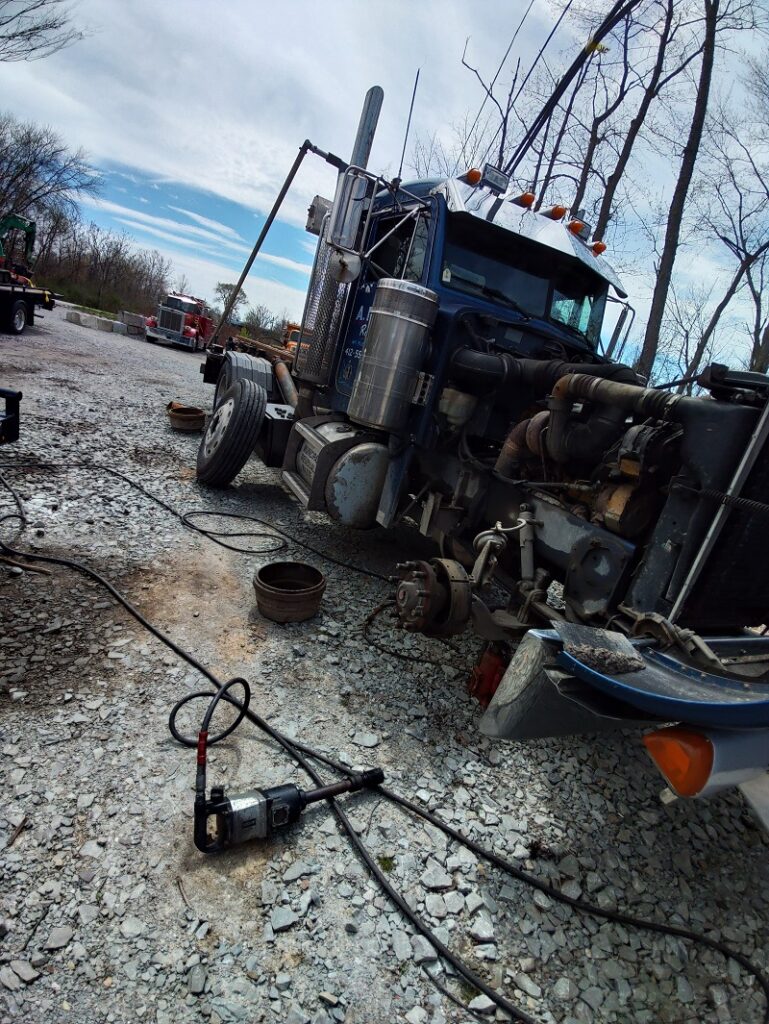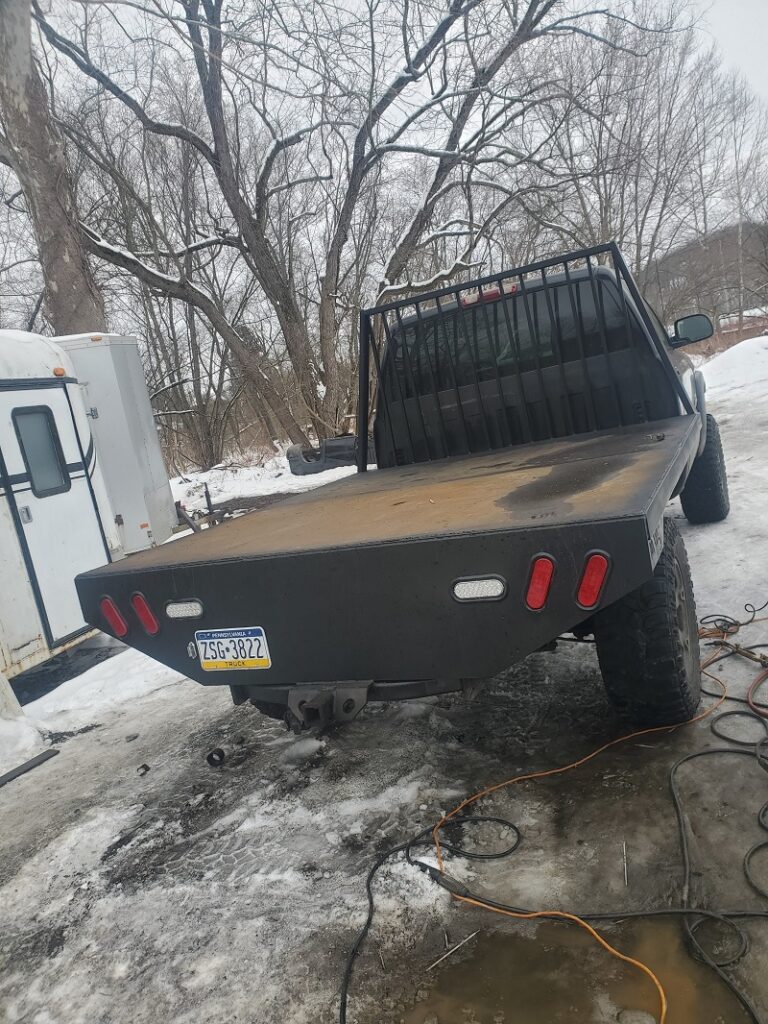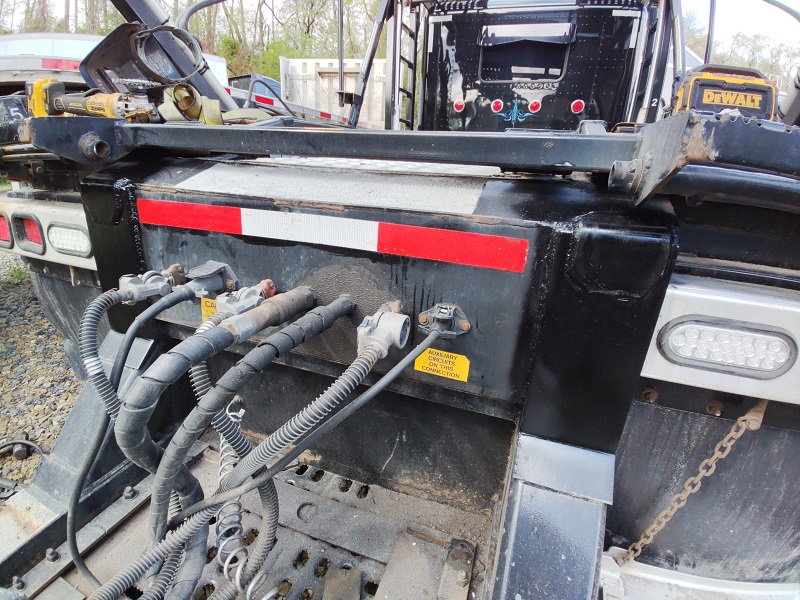Welding and fabricating are crucial components of truck repair, especially when dealing with heavy-duty vehicles like trucks. Trucks endure significant wear and tear due to their demanding usage, so welding and fabrication skills are often needed to restore damaged parts and ensure the truck’s continued functionality. Here’s how welding and fabricating are involved in truck repair:
1. Assessment and Diagnosis:
- Skilled technicians assess the truck’s condition to identify areas that require repair or replacement.
- Common issues may include frame damage, rusted or corroded components, cracked welds, and worn-out parts.
2. Welding Techniques:
- Welding processes like arc welding, MIG welding, and TIG welding are used to repair or replace damaged or worn-out metal components.
- Welding may involve rejoining broken parts, reinforcing weak points, and fixing structural damage.
3. Frame Repair and Alignment:
- Trucks’ frames can suffer damage from accidents, heavy loads, and rough terrain. Welding is used to repair frame cracks and alignment issues.
- Frame alignment ensures that the truck’s structure is balanced and safe.
4. Component Repair:
- Welding and fabrication are used to repair various components, including exhaust systems, suspension parts, brackets, and mounts.
5. Fabrication of Custom Parts:
- In cases where replacement parts are not readily available or cost-effective, fabricators create custom parts that match the original specifications.
6. Body Panel Repair:
- Welding is used to repair or replace damaged body panels, including fenders, doors, and truck beds.
7. Safety Considerations:
- Welding and fabrication involve working with metal and heat, so safety precautions are essential. Proper ventilation, protective gear, and safety protocols are followed to prevent accidents.
8. Weld Inspection:
- Welds are inspected to ensure their quality and adherence to industry standards. Non-destructive testing methods may be used to detect defects.
9. Finishing and Protection:
- After welding, finishing processes like grinding, painting, or coating are applied to protect repaired areas from corrosion.
10. Testing and Validation: – Repaired trucks undergo testing to ensure that they meet safety standards and perform as expected.
11. Documentation: – Detailed documentation of the repair process, materials used, welding procedures, and testing results is important for record-keeping and compliance.
Here are some of the benefits of using welding to repair trucks:
- Welding is a strong and durable way to join metal parts together.
- Welding can be used to repair a wide range of truck damage.
- Welding is a relatively quick and efficient way to repair trucks.
- Welding can be used to make trucks stronger and more durable.
Here are some of the challenges of using welding to repair trucks:
- Welding requires the expertise of a qualified welder.
- Welding can be a dangerous process if not done properly.
- Welding can produce fumes and other pollutants that can be harmful to the environment.
Overall, welding is a versatile and effective way to repair truck damage. However, it is important to use a qualified welder and to take the necessary safety precautions when welding.
Here are some of the most common welding methods used for truck repair:
- Arc welding: Arc welding is a process that uses an electric arc to melt the metal parts together. This is the most common welding method used for truck repair.
- Gas welding: Gas welding uses a gas flame to heat the metal parts and then a filler rod is used to join the parts together. This method is often used for repairs that require a lot of flexibility.
- Resistance welding: Resistance welding uses heat from the resistance of the metal parts to melt them together. This method is often used for repairs that require a lot of speed and efficiency.
The best welding method for a particular truck repair will depend on the type of damage, the materials being repaired, and the desired results.
Here are some of the safety precautions that should be taken when welding trucks:
- Wear appropriate personal protective equipment (PPE), such as a welding helmet, gloves, and goggles.
- Work in a well-ventilated area to avoid breathing in fumes.
- Use the correct welding method and materials for the job.
- Follow the manufacturer’s instructions for the truck being repaired.
By following these safety precautions, you can help to prevent injuries and damage to trucks when welding.
Here are some of the common welding repairs done on trucks:
- Frame repair: The frame is the main structural component of a truck. It is made of metal and supports the weight of the truck and its cargo. Frame repair is often necessary to fix cracks, holes, or other damage to the frame.
- Body repair: The body of a truck is the outer shell that protects the driver and passengers. It is made of metal or plastic and can be damaged in a collision or by rust. Body repair is often necessary to fix dents, creases, or other damage to the body.
- Engine repair: The engine is the heart of a truck. It is responsible for converting fuel into power. Engine repair is often necessary to fix problems such as a blown head gasket or a cracked block.
- Transmission repair: The transmission is responsible for transferring power from the engine to the wheels. It is a complex system that can be damaged by wear and tear or by abuse. Transmission repair is often necessary to fix problems such as a slipping clutch or a broken gear.
- Brake repair: The brakes are responsible for stopping the truck. They are made of metal and can be damaged by wear and tear or by abuse. Brake repair is often necessary to fix problems such as a spongy brake pedal or a grinding noise when braking.
Truck repair often requires a combination of mechanical, welding, and fabrication skills. Skilled technicians work to address not only the mechanical issues but also the structural integrity of the truck. Properly repaired trucks are essential for the safety of drivers, the efficiency of operations, and the longevity of the vehicles.




